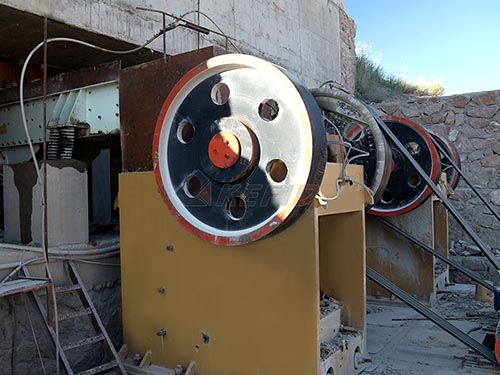A jaw crusher is a primary crushing machine used in mining, quarrying, and construction industries to reduce large rocks, ores, or other hard materials into smaller, more manageable pieces. Here’s a detailed breakdown:
How It Works
1. Crushing Mechanism:
– A jaw crusher consists of two vertical jaws—one fixed (stationary) and one movable (swing jaw).
– The movable jaw exerts force on the material by pressing it against the fixed jaw.
– Material is crushed progressively until small enough to pass through the bottom gap (discharge opening).
2. Key Components:
– Fixed Jaw Plate: Attached to the crusher frame.
– Movable Jaw Plate: Driven by an eccentric shaft (pitman) that creates an elliptical motion.
– Toggle Plate: Safety mechanism to protect the crusher from overload.
– Flywheel: Stores energy for consistent crushing force.
Types of Jaw Crushers
1. Blake (Double Toggle): Older design with a pivoted swing jaw; robust but less efficient.
2. Dodge (Single Toggle): Movable jaw pivots at the bottom; simpler but limited in capacity.
3. Universal (Overhead Eccentric): Modern single-toggle design with higher efficiency and adjustability.

Applications
– Primary crushing of hard materials (granite, basalt, iron ore).
– Recycling concrete and demolition waste.
– Laboratory-scale crushing for research.
Advantages
– Simple structure, low maintenance.
– High reduction ratio (typically 6:1 to 8:1).
– Handles abrasive materials well.

Disadvantages
– Less efficient than gyratory crushers for high-capacity needs.
– Wear-prone parts (jaw plates) require regular replacement.
Maintenance Tips
– Regularly check jaw plates for wear and replace as needed.
– Lubricate bearings and eccentric shafts to prevent overheating.
– Monitor discharge settings to ensure optimal particle size output.
Would you like details on sizing, operational parameters, or comparisons with other crushers (e.g., cone/impact)?
Leave a Reply